I got amazed with Julia's recent posts about her background in fashion design, and her Korean sources of inspiration, and it reminded me of an exhibition I went to in the Met a while ago: Rei Kawakubo's "Comme des Garcons", which is a collection of close to 150 outfits created over the last 40 years.
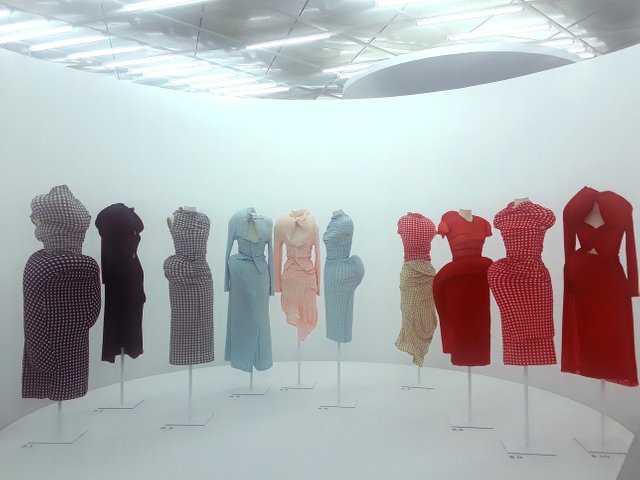
Rei Kawakubo's "Comme des Garcons" (fr. like some boys) is a commentary on the aesthetics of today, strongly influenced by the Japanese culture and fashion. Her designs justify the in-between by representing contrasting abstracts, such as presence-absence, peace-war, innocence-obscene. It challenges gender roles in a sense that rejects to associate certain ideas and values with a particular gender.
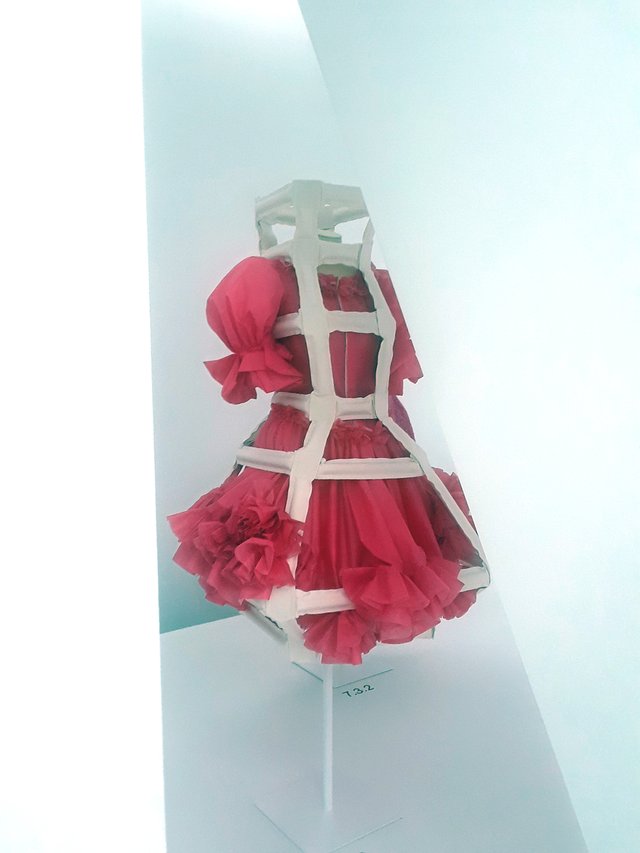
You can observe the extremes on the closest, the most natural example for human beings - the body - which remains unsaid, is visualized in the mind of the recipient. I like that in contemporary art - that the big message is easily translatable from the visual form into the world of ideas, and then - into words.
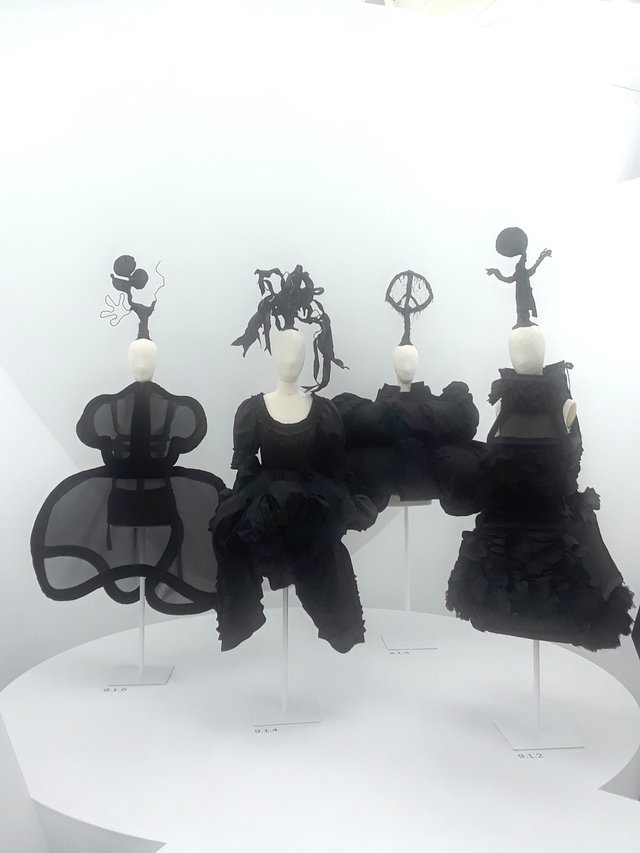
What you see is both familiar and odd. This easily spotted combination is the key to understanding Kawakubo's message of the extremes. Conventional dichotomies are portrayed as artificial, arbitrary, empty. It's a clash of what's seen as bad taste and what's elite that keeps the recipient wanting more. The works represent cycles of life, rhythms, personal freedom, hybrid identities, lost boundaries of body... and more.
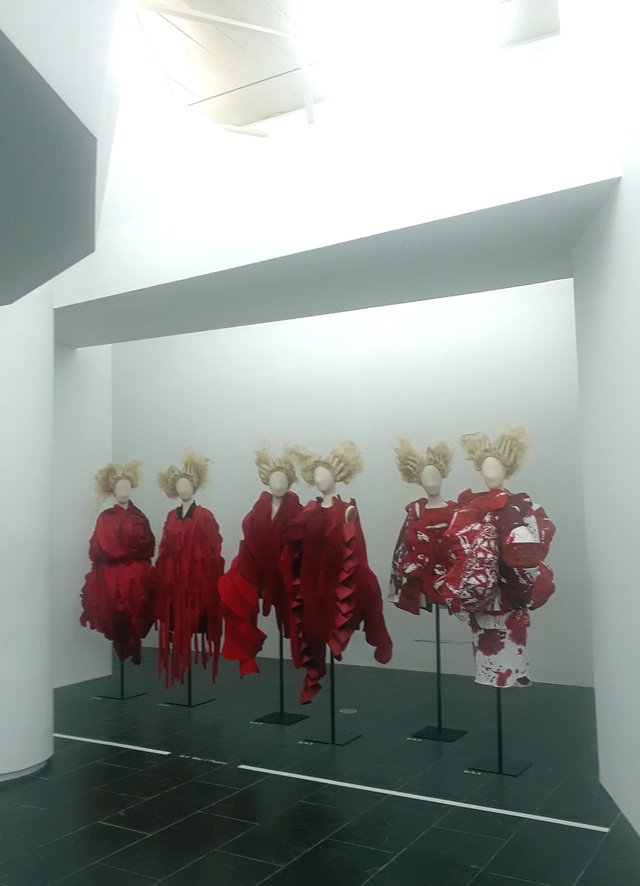
And it made me wonder... Because each and every single one of us is somehow stuck in between. According to Kawakubo - always, as the curve never really touches the extremes. Taking it more literally - we are between extreme ideas, constantly selecting and reevaluating our hierarchies of values. We are between places, people, dreams, between the good and the bad.
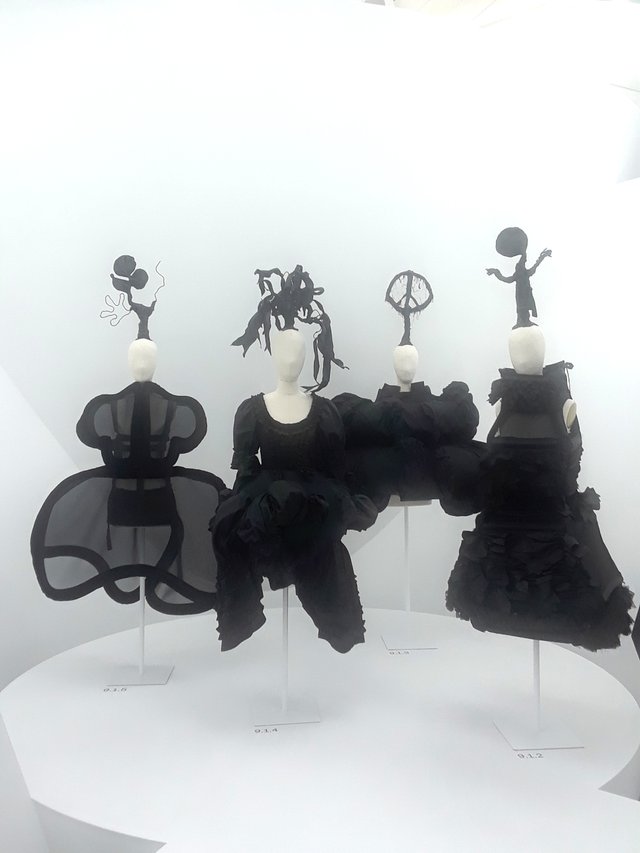
I only touched the topic - it's impossible to explain 40 years of art work in one steemit post. But I was aiming at making you interested enough to dig deeper. If you want to read some more on the exhibition at the Met, here is an article on that.
There were also three pieces by Mark Rothko (1903-1970) currently on display, however, the Met has several other ones in stock. I'm still thinking of writing a more informative, larger post on his art. Let me know if you'd be interested. Getting back into the arts, spending more time by myself and regaining my personal balance and strength is what I'm focusing on right now, so expect some posts on some new ideas I may soon have...
And something I wanna ask you - personally...
I just upvoted You! (Reply "STOP" to stop automatic upvotes). Do społeczności: Jeżeli uważasz że głos został przyznany niesłusznie, przedstaw krótkie uzasadnienie w odpowiedzi do tego komentarza.
Downvoting a post can decrease pending rewards and make it less visible. Common reasons:
Submit